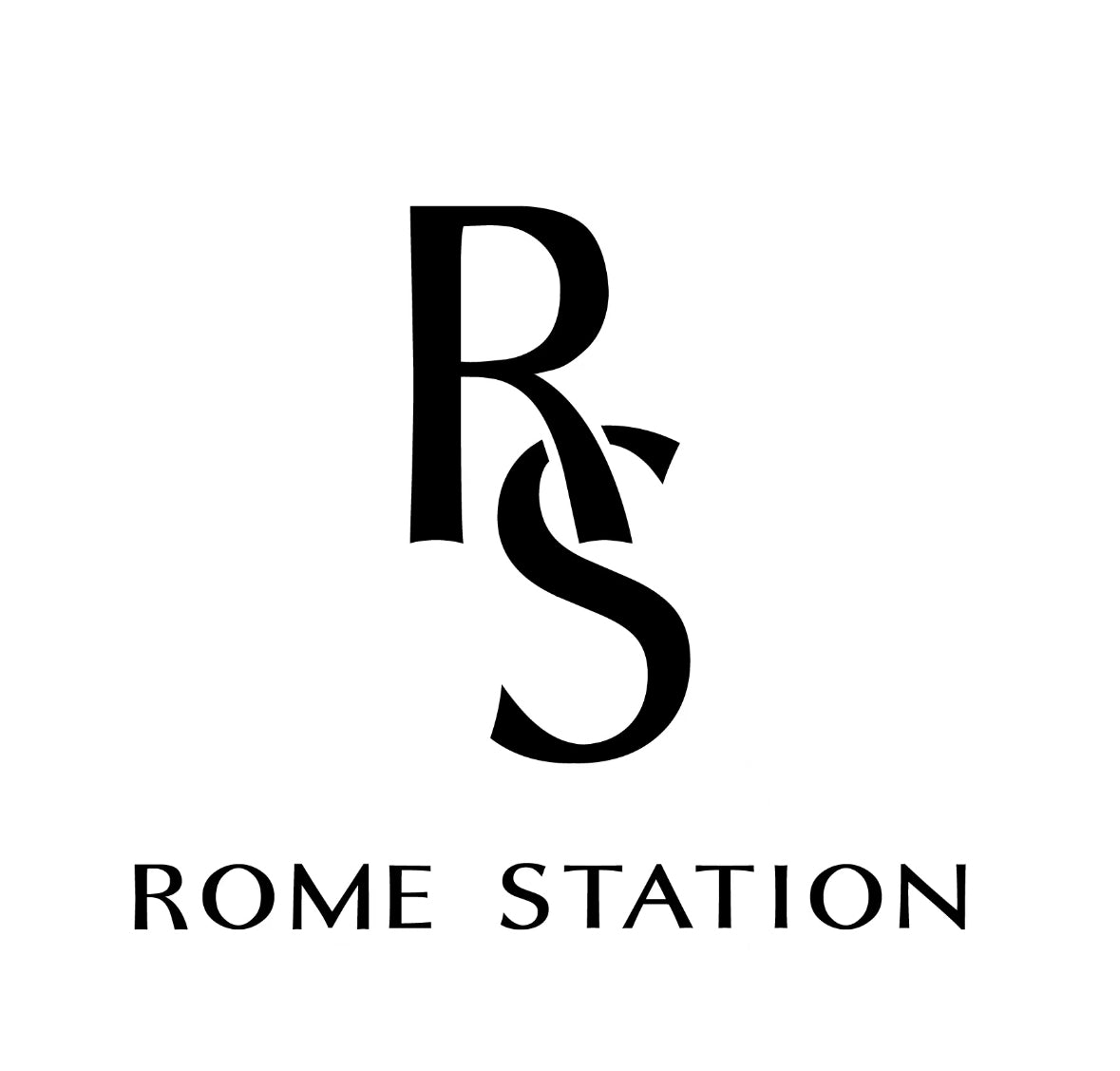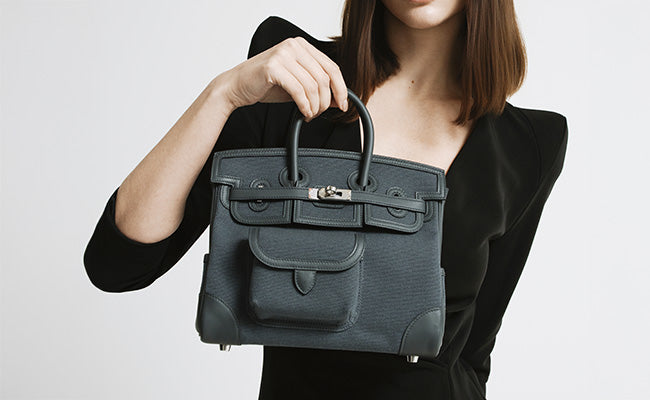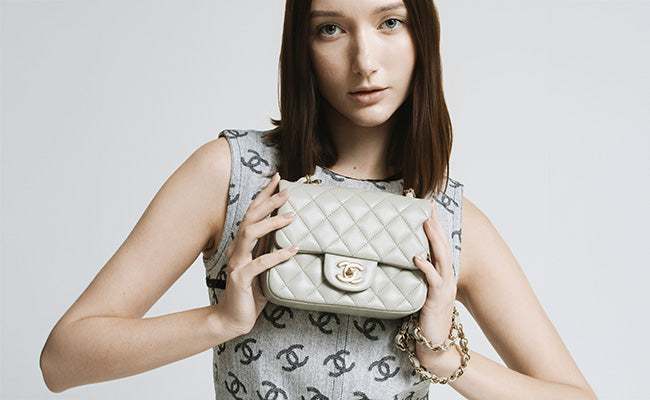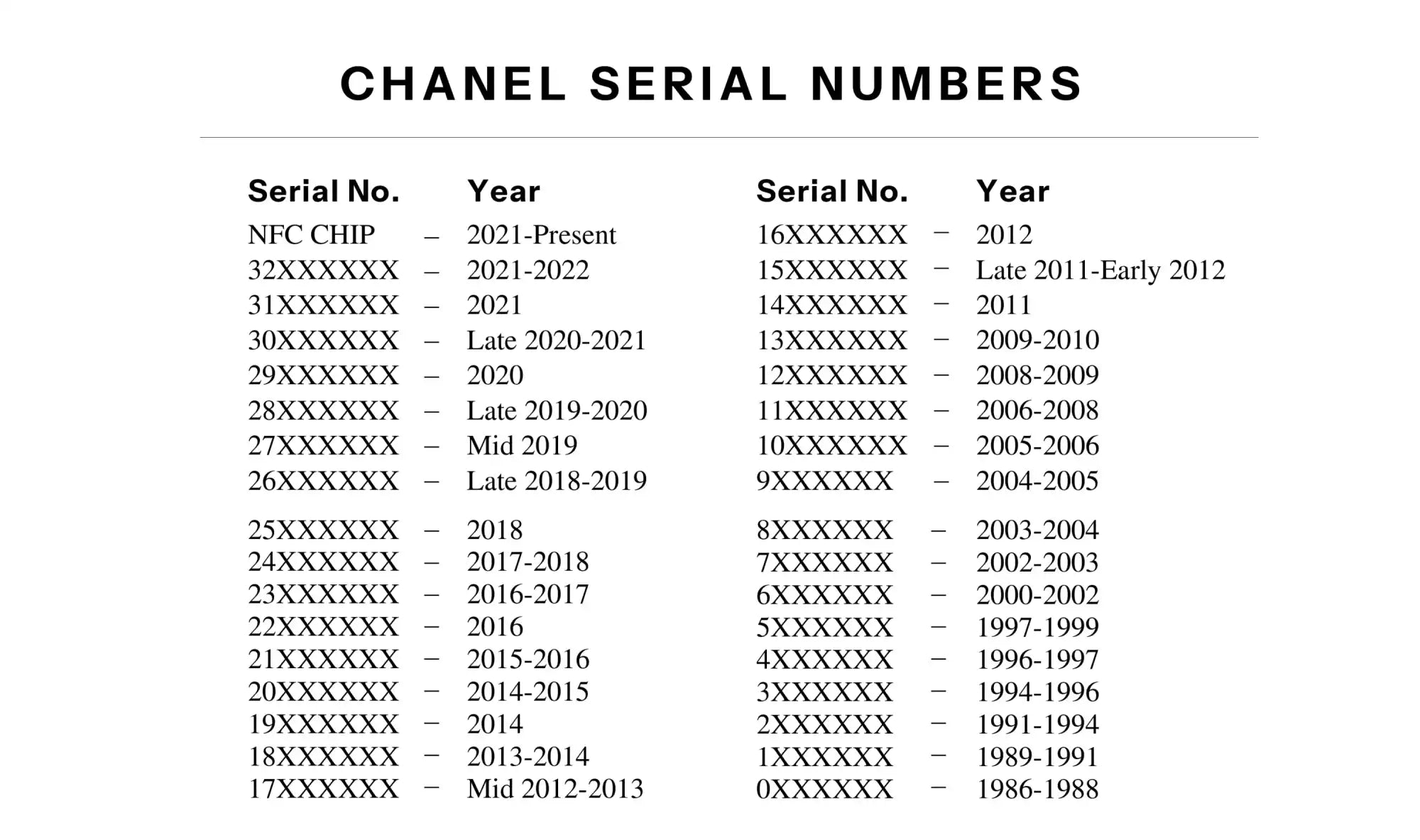Chanel Date Stamp Guide: Authenticate, Date & Collect Like a Pro
Every Chanel bag has a story, and its tiny, often tucked away date stamp is a key part of that. This little code isn’t just a number; it’s a window into when your bag was made. Since the mid-1980s, these serial numbers have changed a lot, going from basic 6-digit stickers to shiny holograms, and now, to microchips that only Chanel can read. If you want to authenticate a Chanel bag, figure out its age, or check its resale value, you really do need to understand the date stamp. Vintage, modern, or somewhere in between, every era has its quirks. Details that help you spot the real deal (or a really good fake). Let’s break down how to find these codes, how to read them, and what changed over the years. We’ll look at sticker styles, fonts, holograms, and why, after 2021, Chanel swapped stickers for microchips, making things a bit trickier for everyone outside their boutiques.
Key Takeaways
- Chanel date stamps started as 6-digit codes in 1984 and gradually became more complex, ending up as NFC microchips in 2021.
- Each serial number format matches up with certain years and includes unique security details that help weed out fakes.
- New Chanel bags skip stickers entirely, using microchipped plates you can’t read without Chanel’s own scanners.
What Is a Chanel Date Stamp?
A Chanel date stamp is basically the bag’s ID. It tells you roughly when the bag was made and is crucial for authentication. Over the years, these have gone from simple numbers to high-tech features, and now they’re digital.
Definition and Purpose
A Chanel date stamp is a code inside authentic bags, showing when the bag was produced. Chanel rolled out these stamps in 1984 to fight off counterfeits. You’ll usually find the date stamp as a serial number on a sticker, hidden somewhere inside. It could be on a leather tab, inside a pocket, or along a side wall. It depends on the style. Don’t expect a month or day. These codes just give you the production year, not the exact date. Chanel mainly uses these for authenticity and tracking. Internally, the codes help them keep tabs on batches and quality across factories.
Date Stamp Versus Serial Code
People toss around “date stamp” and “serial code” like they’re the same thing, but technically, there’s a difference. The serial number is the actual string of numbers on the sticker, like “24XXXXXX”. The date stamp (or date code) is the whole system serial number, sticker design, and security measures. Think of the serial number as the code itself, while the date stamp is the whole approach Chanel uses to mark and track bags. Since 2021, Chanel ditched the old stickers for NFC microchips in metal plates. Only Chanel’s own scanners can read them.
Why Date Stamps Matter for Collectors
If you collect or resell Chanel, knowing what’s authentic is everything. Date stamps are your first checkpoint against fakes. You can check if a bag’s age matches what the seller claims. For example, a 2010 bag should have an 8-digit serial starting with certain numbers, not a 7-digit code from the ‘90s. Collectors really care about production year, some years had special editions or unique craftsmanship that bump up the value. Date stamps also help you spot when Chanel changed up their security. Bags from the late ‘90s, for example, show the jump from basic stickers to holograms. If a bag has neither a traditional date stamp nor a microchip, that’s a big red flag. Real Chanel bags always have one method never both, never none.
Evolution of Chanel Date Stamps and Serial Numbers
Chanel’s authentication system has changed a ton since the ‘80s. What started as a basic 6-digit code is now a microchip buried inside the bag. It’s been a game of cat and mouse with counterfeiters, and Chanel’s always trying to stay a step ahead.
History and Introduction of Serial Numbers
Chanel kicked off serial numbers in 1984, mainly to fight fakes. Before that, bags had no internal IDs at all. The first Chanel serial numbers were simple: 6 digits starting with “1” (like 1XXXXX). These were printed on plain white stickers with black numbers, covered by a clear film. No holograms, no logos, nothing fancy. At the same time, Chanel started including authenticity cards, black cards with gold trim that matched the bag’s serial number. Two ways to check, just in case. By 1986, Chanel needed more numbers, so they bumped it up to 7 digits, starting with “0” (0XXXXXX), and added a background with repeating Chanel logos.
Major Changes Over the Decades
In the ‘90s, things got more polished. From 1991–1994, codes started with “2,” then “3” and “4” for the next few years. The font got more consistent, too. Late ‘90s? Big shift. Around 1997, Chanel introduced holographic stickers (5XXXXXX series), making it much harder to fake. From 2000–2005, Chanel really dialed up the security:
- Double CC logos above the serial
- Vertical “CHANEL” text down the right side
- Gold flecks and glitter in the sticker
- X-cut slits so you can’t peel it off cleanly
2005 saw the jump to 8-digit codes (10XXXXXX to 31XXXXXX), keeping the same security but letting Chanel make more bags. This setup stuck around until 2021.
Transition to Microchips
In 2021, Chanel scrapped the stickers and the authenticity cards. Now, it’s all about NFC microchips, hidden in little metal plates inside the bag. These chips have 8-character codes and laser-engraved CC logos. The plates match the bag’s hardware and are tucked into the lining or a pocket. Only Chanel boutiques can scan these chips. They hold all the info such as production, purchase, model, so Chanel controls the whole process. This move means you can’t just check a sticker or card anymore. For resellers and collectors, that changes the game.
Significant Milestones in Authenticity Methods
Some big moments in Chanel’s authenticity journey: Each step was a reaction to new counterfeiting tricks. Holograms in the ‘90s, microchips in the ‘20s, Chanel’s always upping their game.
- 1984: First 6-digit serials and authenticity cards
- 1997: Holographic, tamper-proof stickers debut
- 2000: Stickers get glitter, logos, and extra layers
- 2005: 8-digit codes arrive
- 2021: NFC microchips take over
How to Locate Chanel Date Stamps and Serial Numbers
Finding the date stamp isn’t always obvious. It really depends on the bag style and era. Some are easy to spot, others not so much.
Locations by Bag Type
Chanel tends to hide date stamps based on the bag’s design. Most Chanel handbags have the sticker on a leather tab or right on the lining. For vintage Chanel, especially from the ‘80s and ‘90s, the sticker might be in a different spot than on new bags. Common places:
- On a leather tab inside
- Side wall of the main compartment
- Inside a zippered pocket
- Behind a flap
Classic Flap Bags
Classic flaps almost always have the date stamp on a little leather tab on the left inside. Open the flap, look just below, and you’ll probably see it. The tab usually matches the interior color. Sometimes, especially with older bags, the sticker’s faded or partly gone. That’s pretty normal.
Boy Bags and Wallets
Boy bags usually put the sticker inside a pocket or on a side wall. Start with the zip pocket, then check the rest. Chanel wallets tend to hide the date stamp in the main bill slot or behind a card flap. The sticker’s smaller than what you’d see in a purse. For Wallet on Chain styles, if it’s a post-2021 piece, the microchip plate is usually tucked inside the zippered section not out in the open.
Signs of Incorrect Placement
Fake bags often mess up the sticker location. Real Chanel never puts stickers on the outside, hardware, or dust bag. Watch out for stickers on:
- The dust bag (not the bag itself)
- Chain or metal bits
- The outside leather
- Care cards or random paper
Tip: A real sticker feels like it belongs there, not slapped on at the last minute.
Decoding the Chanel Date Stamp: Formats and Series
Chanel date stamps follow a pattern, but it’s changed a lot over time. The number of digits and the way the code looks tell you exactly when the bag was made, if you know what to look for.
Understanding Number of Digits
The digit count gives away the era. Bags from 1986–1994 have 7-digit codes starting with 0, 1, 2, or 3. From 1997 on, most Chanel date codes have 8 digits. The 2020–2021 series still use 8 digits but add new security touches like holograms and special fonts. Fakes often mess this up. If someone says a 2015 bag has 6 digits, nope that’s not right.
Reading the First Digits for Production Year
The first numbers are the real clue. For modern bags, it’s pretty direct. Serial codes starting with 30 mean 2020. 31 is 2021. 27–29 means 2019. 25? That’s 2018. Earlier, the numbers just go in order: 22 for 2016, 21 for 2015, and so on. The 0XXXXXX format is as far back as 1986.
Feature Differences by Era
The look of date codes has shifted a lot over Chanel's history. Early stickers? Just plain white labels with basic black numbers. Bags from 2020-2021, though, ramped up the security. Now you see transparent tape with these blue and gold specks over the sticker. There’s an "X" cut, so if anyone tries to peel it off, you’ll know right away. Typography gets very specific, too. Recent Chanel serial numbers show zeros with strikethroughs, and ones with tiny serifs. The font overall just looks sharper than it used to. Bags made before 1984 don’t have date stamps at all. For those, you’ve got to rely on hardware, stitching, and construction details to check authenticity.
Authenticating Your Chanel Bag Using Date Stamps
Date stamps are a key authentication tool, but you really need to use them with other checks. The authenticity card should match your bag's serial number, and the holographic bits show off some advanced security. Certain things just scream "fake" right away.
Cross-Checking with Authenticity Cards
Think of the authenticity card as your bag's birth certificate. It needs to have the exact serial number as the sticker inside, no exceptions. Pre-2021 cards are black with gold borders. The card feels sturdy, not like cheap printer paper. The gold foiling should be crisp and even.
- Serial numbers must match exactly
- Font style should line up between card and sticker
- Card quality should feel as luxe as you’d expect from Chanel
Fakes often get sloppy here mismatched numbers, flimsy cards, or dull gold. If the card looks like it came off a home printer, that's a big red flag. And since bags from 2021 onward don’t come with authenticity cards (they use microchips now), any post-2021 bag with both a card and a chip is fake.
Holographic Stickers: What to Look For
Real holographic stickers from 1997 to 2021 have layers of security that are tough to fake. We always tilt the sticker under different lights. Real ones throw rainbow reflections; fakes usually look dull or use cheap holographic film.
- Two interlocking CC logos above the serial number
- Gold speckles and iridescent glitter spread evenly
- Vertical "CHANEL" text on the right edge
- Dark vertical line on the left
- X-cut tamper lines that show damage if peeled
The glitter should catch the light naturally, not look painted or flat. Authentic tape has real depth.
Typography details:
- Zeros with strikethroughs (on certain series)
- Ones with tiny feet
- Numbers should look clean, not fuzzy
Common Counterfeit Red Flags: Some Mistakes Just Give Away a Fake Chanel Bag Instantly
Serial number issues:
- Wrong number of digits (real ones use 7 or 8)
- Numbers outside the expected range for the year
- Fonts that don’t match between sticker and card
Bad materials:
- Stickers that tear easily
- Holographic effects that look plastic
- Blurry or crooked print jobs
Missing security:
- No CC logos above serials (for post-1997 bags)
- No glitter or gold flecks
- Solid stickers that claim to be from holographic eras
Placement mistakes:
- Stickers in the wrong spot for that model
- More than one serial sticker
- Stickers that fall off without effort
Counterfeiters usually get the big stuff right but miss the subtle things. Logo spacing, glitter density, tape thickness, those are hard to fake.
Special Cases and Tips for Vintage and Modern Chanel
Vintage Chanel bags are tricky since early ones don’t have modern security, and real bags from some periods might be missing or have damaged date stamps. Knowing these quirks helps you tell apart true vintage from sneaky fakes.
Date Stamps in Vintage Chanel Bags
Bags from before 1984? No date stamps or authenticity cards, and that’s totally normal. The first real date stamps (1984–1986) had a simple 6-digit number starting with "1" on a plain white sticker. No hologram, no glitter, nothing fancy. Early vintage stamps usually have:
- Plain white stickers with black numbers
- No CC logos or holograms
- Simple clear tape over the sticker
- Barely any anti-counterfeiting features
By the late '80s, Chanel rolled out 7-digit codes with faint logos in the background. The sticker’s left edge was scooped, and the zero didn’t have a strikethrough. Stickers in the '90s started getting more secure. The 5-series (1997–1999) brought in holograms and tamper-proof tricks.
Bags Without Serial Numbers or Cards
Some real Chanel bags don’t have serial numbers. Pre-1984 bags never did, so you have to check craftsmanship and materials instead. Sometimes stickers come off during cleaning or repairs. Restorers might have to remove parts of the interior, and not everyone saves the sticker. You’ll see this when:
- The bag is from before serials were a thing
- It’s been cleaned or restored
- The sticker wore away with time
- A previous owner took it off
Missing authenticity cards aren’t a sure sign of a fake. People lose them, or vintage bags just never had them. If there’s no serial, you have to look at hardware, stitching, leather, and how the bag is put together. Those are much tougher for fakers to copy than a sticker.
Typical Wear and Sticker Loss
Stickers just don’t last forever, especially on bags that get used a lot. The glue weakens, and edges start to peel up. Hot or humid storage speeds up the process. Bags kept in attics or basements usually have rougher-looking date stamps. Typical wear:
- Faded or hard-to-read numbers
- Peeling edges and corners
- Yellowed or cracked tape
- Smudged print
Honestly, a beat-up sticker with faded numbers is often more convincing than a perfect one on a "vintage" bag. Counterfeiters love using fresh, flawless stickers that don’t match the bag’s age. Holographic stickers from 1997 onward can lose their shine or look cloudy as they age. That kind of natural wear is tough to fake.
How Dealers and Collectors Verify Authenticity
The pros use a bunch of tools, not just the date stamp. They check how the bag’s built, hardware details, and materials, plus serial numbers. Trusted dealers keep databases of serial numbers and compare them to known production details. They cross-check stamps with bag style, hardware, and what was typical for that year. A real checkup includes:
- Validating serial numbers against known ranges
- Checking hardware weight and finish
- Looking at leather grain and texture
- Reviewing stitching and thread
Dealers often take close-up photos of serial stickers to spot security features you can’t see with the naked eye. Microprinting, holograms, and tamper-proof bits show up better under good lighting. Experts also know the quirks of each era, where the stamp should be, what the font looks like, which features go together. They can spot weird combos or details that just don’t fit.
Frequently Asked Questions
Chanel date stamps can be a puzzle, where to find them, what they mean, and how the security features changed from the basic stickers in 1984 to today’s microchips. These details are key for telling real from fake, thanks to their unique formatting, fonts, and placement.
How can you distinguish an authentic Chanel bag by its date stamp?
Genuine Chanel date stamps have security features that are tough to copy. From 2005 to 2021, real stickers had clear tape, two CC logos, gold speckles, and iridescent glitter. The font tells you a lot: zeros with strikethroughs, ones with tiny feet, "CHANEL" running vertically on the right, and a dark line on the left all matter. The X-cut lines are there to ruin the sticker if someone tries to peel it off, making it nearly impossible to move to another bag.
What does each digit in a Chanel serial number represent?
Chanel serial numbers aren’t like codes for the factory or month. They’re just sequential numbers that match production years. The first digit (or two) tells you roughly when the bag was made. For example, numbers starting with "10" to "31" mean the bag’s from 2005 to 2021 (8-digit format). Earlier 7-digit codes (1984–2005) started with 0–9. The rest is just counting up, no hidden info about factories or months.
Is there a foolproof method to verify a Chanel bag's serial number online?
No, there’s no public Chanel serial number database. Any website offering instant serial lookups is sketchy and probably a scam. Chanel keeps their own internal records, but they don’t share them. Only Chanel boutiques can check production details, and that’s with their own systems. Since 2021, Chanel uses NFC chips that only their stores can read. If you want to be sure, get a pro authentication, they’ll look at way more than just the number.
Can you explain the evolution of Chanel's date stamp designs over the years?
Chanel’s date stamps started as plain white stickers in 1984, no security, just black numbers. The big change came in 1997, when they added holograms and tamper-proof features. By 2000, stickers had two CC logos, vertical "CHANEL" text, gold flecks, and X-cut lines. In 2005, they switched to 8-digit codes and kept those security upgrades through 2021. After that, they ditched stickers for NFC microchips in metal plates.
How do discrepancies in a Chanel bag's date code indicate a counterfeit?
If the font looks off, that’s a huge red flag. Real stickers use specific typography, zeros with strikethroughs, ones with tiny feet (for certain years). Missing or wrong security features also spell trouble. Stickers from 2000–2021 should have gold flecks, clear tape, and CC logos in the right spot. If a bag’s serial number doesn’t match the year it claims to be from, it’s likely fake. For example, a "2010" bag with a serial starting "25" just doesn’t fit Chanel’s numbering.
Where inside a Chanel bag should you look to find the serial number?
Serial number spots shift depending on the bag’s style and when it was made. Usually, you’ll spot stickers tucked inside interior pockets, pressed against the inner walls, or even hidden in the lining seams. Classic flap bags? They tend to hide stickers in the main compartment or the back slip pocket. Totes are different, they often have them along the interior side walls or sometimes inside a zippered pocket. If you’ve got a microchipped bag from 2021 or later, you’ll want to check for a tiny metal plate sewn into the lining. Wallet on Chain styles? Those usually stash these plates inside zippered sections, not the main compartment. Good luck hunting, it can feel like a treasure hunt!



